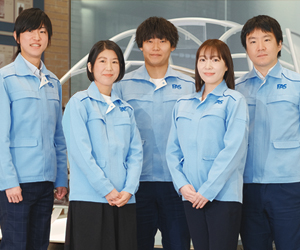Wire harnesses are wiring parts that bundle together the electrical wires used for power supply and communications in automobiles.
Strung throughout the automobile chassis like a nervous system, wire harnesses are an irreplaceable vehicle component.
Recently, the number of wire-harness circuits used per vehicle has been steadily increasing, as vehicular electrical systems develop and vehicle electrification advances, making wire harnesses more important than ever.Yet as wire harnesses grow in importance in the evolution of the automobile, their presence causes vehicle weight to increase, driving up fuel consumption.
To counteract this trend, each part of the wire harness must be made compact and lightweight.Automakers are compelled to develop vehicles that offer high performance and a smooth ride. Yet energy-saving performance is also required.
To reduce the weight of its wire harnesses,
Furukawa AS developed the Alpha Terminal.
In this installment we speak with three people from Development&Engineering Department 2: Mr. Kawamura, Mr. Yamazaki and Mr. Tonoike.
Table of Contents
- What is the Alpha Terminal?
- How the Development of the Alpha Terminal Came About
- The Real Strengths of the People in the Alpha Terminal Development Team
- The Uniqueness of the Alpha Terminal
- Overcoming Obstacles of Distance, the Specialist Team Worked with the Shop Floor to Move Development Forward
- The Project Was Shared with the Clients from the Concept Stage, Including Plant Observation
- Future Directions in the Alpha Terminal Strategy
What is the Alpha Terminal?
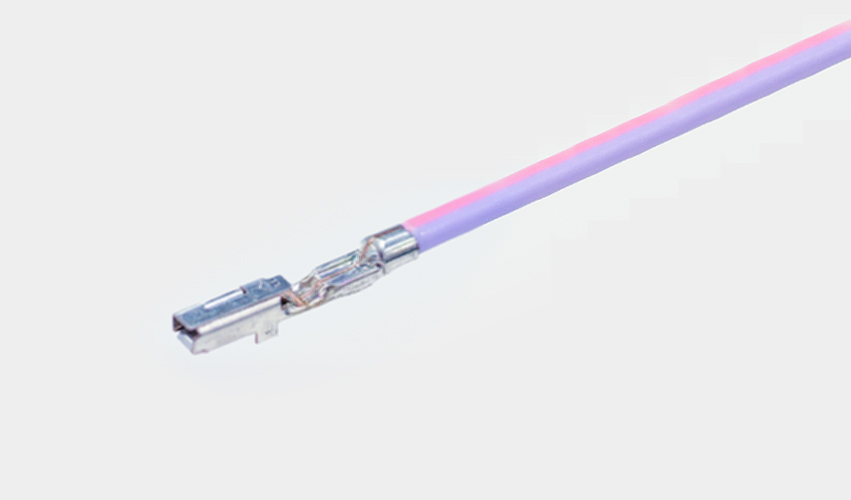
“The Alpha Terminal is a terminal for aluminum electrical wires, manufactured by Furukawa AS. Conventional wire harnesses consist of copper wires, but copper is quite heavy. So we looked for a way to reduce weight by replacing copper wires with aluminum electric wires. Unfortunately, aluminum wires have one big problem: they require protection from water, which causes them to corrode.
“The Alpha Terminal has a tubular structure that houses the electrical wires. Because the wires are not exposed, they are protected from corrosion.”
The Alpha Terminal protects aluminum wires from corrosion, solving a major issue with the adoption of aluminum wires.
The question of how well corrosion could be prevented was a major development bottleneck, notes Kawamura.
“When water or other liquids are poured on copper terminals and the contacts of aluminum wires, the aluminum corrodes, causing abnormalities. In the worst cases, the wires can be completely severed. Corrosion in conventional products is prevented by coating them with plastic, but this approach increases the size of the product. Manufacturing costs are also high. These concerns were a major impetus for expanding the adoption of aluminum.”
And so Furukawa AS developed the Alpha Terminal.
How the Development of the Alpha Terminal Came About
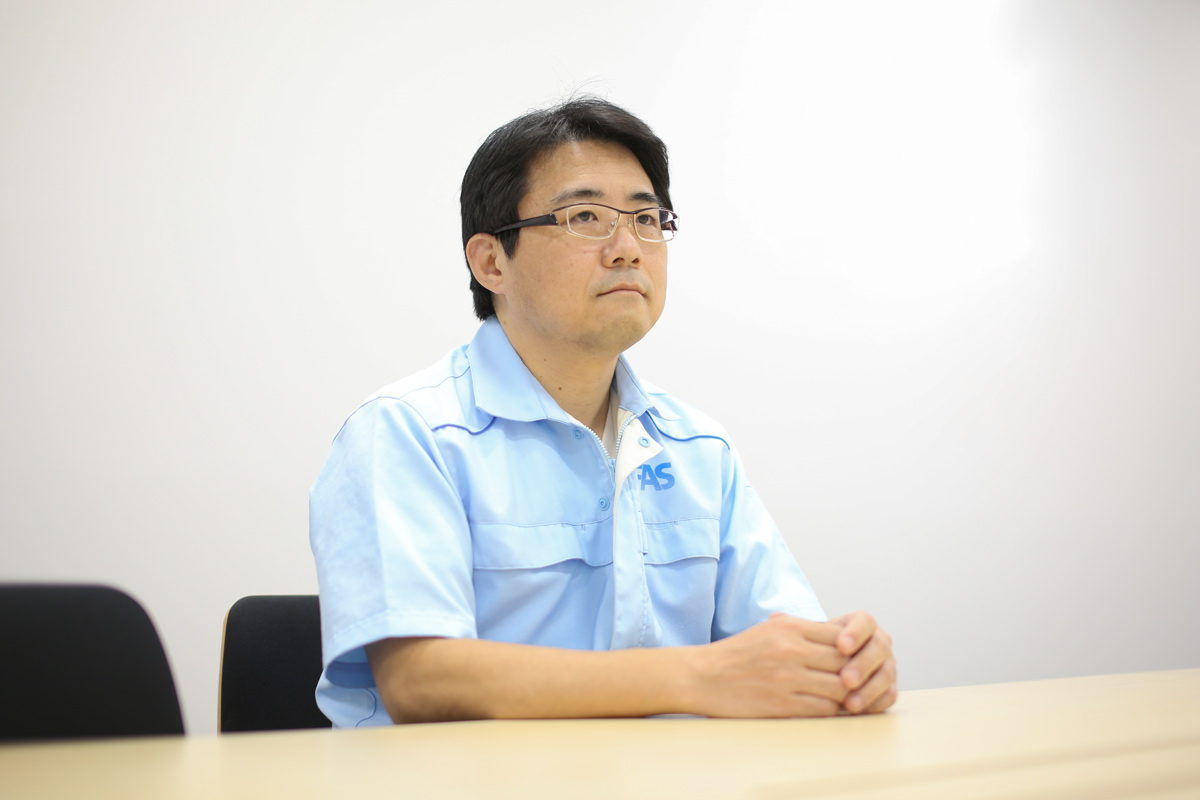
“The concept of adopting a tubular structure for terminals to shield the aluminum from exposure was not a novel concept in itself.”
But it wasn’t yet feasible with the technology we had at the time.
“Normally, terminals are made by press-forming a plate, which forms a seam when the tubular structure is made. To succeed in making a tubular structure impervious to water, major issues in production method and cost had to be overcome.”
At that juncture the team learned of a new technology, from a separate development program, that would prove to be key: Fiber laser welding.』 This was the game-changer.
“Furukawa Electric had developed a welding machine using a new technology called fiber laser welding. They were looking into manufacturing approaches using fiber laser welding, in a separate product-development project.”
Fiber laser welding is a unique welding technology that enables fine welding at high speeds.
“We thought we might be able to use this welding technology to weld the seams in small terminals with high speed and precision. That’s what started the development project.”
The Real Strengths of the People in the Alpha Terminal Development Team
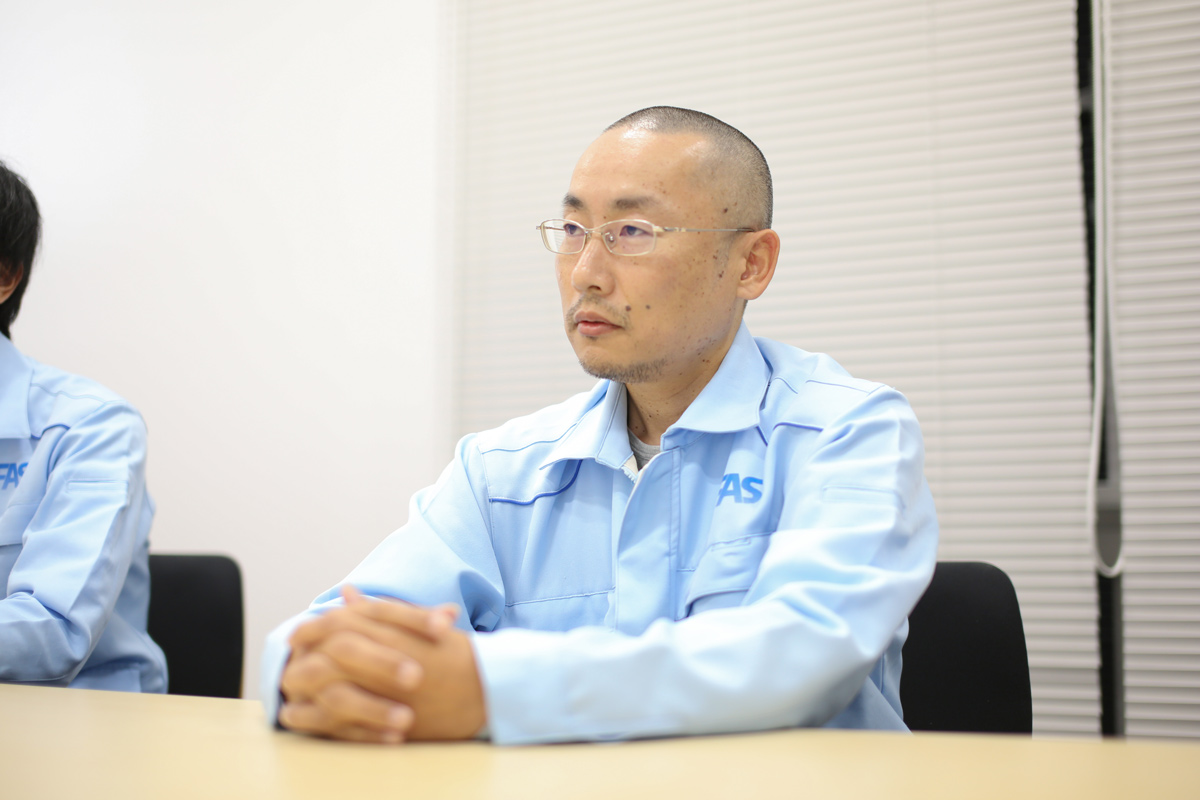
“Once we started the actual development work, lots of issues cropped up.”
At first the developers thought that, if they could manufacture a tubular terminal, the rest of the project would follow easily.
“A major assumption of this project was that the electrical wires could be connected securely to the terminals, even if the shape of the terminals changed significantly.”
“The aluminum had to be protected from water, so a secure seal was a must, and we needed to construct a theory of the mechanism for shutting out water.”
“Also, we had never added a welding process to the manufacturing process for Alpha terminal before. That raised a number of practical issues, such as developing the necessary equipment and designing inspection methods.”
With technology so starkly different from preceding approaches, the issues were too diverse for the terminal designers and production heads to resolve on their own. Specialists from around the Furukawa Electric Group were called in.
“We assembled a team of 10 members, mainly from Furukawa Electric research facilities, including specialists in metallurgy, in polymers, and in analysis and simulations, among others. We worked together to move the development process forward.”
Development took three years to complete. When all issues were resolved, the project moved on to mass production.
The Uniqueness of the Alpha Terminal
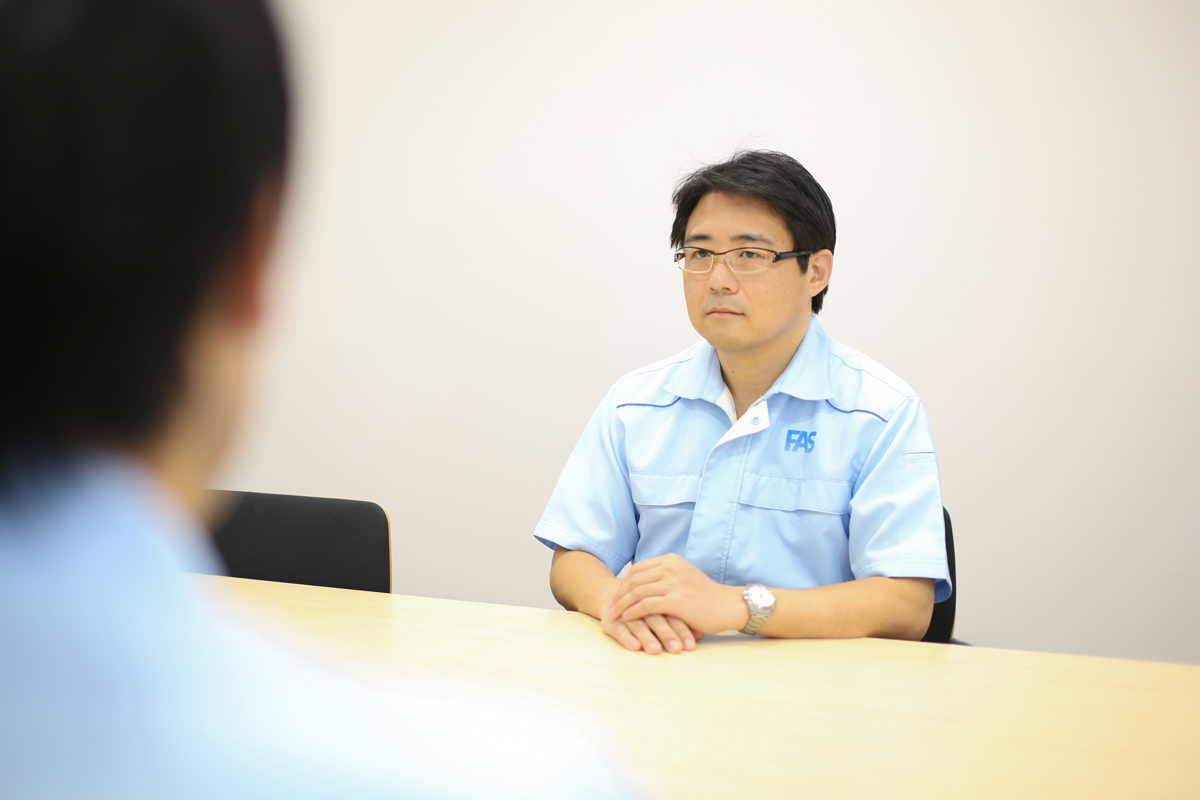
The answer to this question had both technical aspects and human aspects.
“Welding the terminals require not only welding technology but also the basic terminal manufacturing technology. Welding of even the tiny gaps that are tolerated in conventional welding would result in major defects. To address this problem, advanced press forming technology was required to manufacture the Alpha Terminal.”
“Knowledge of metals is essential, as welding quality differs dramatically according to conditions and materials used. We needed a simulation specialist, to test the connection and water-stopping mechanism. It was vital to assemble the necessary technical expertise and personnel from within the Group to the furthest extent possible.”
The production of the Alpha Terminal was made possible not only through the adoption of new technologies but also through the hard work of Furukawa Electric Group professionals with the expertise to devise effective approaches based on those technologies.
Overcoming Obstacles of Distance, the Specialist Team Worked with the Shop Floor to Move Development Forward
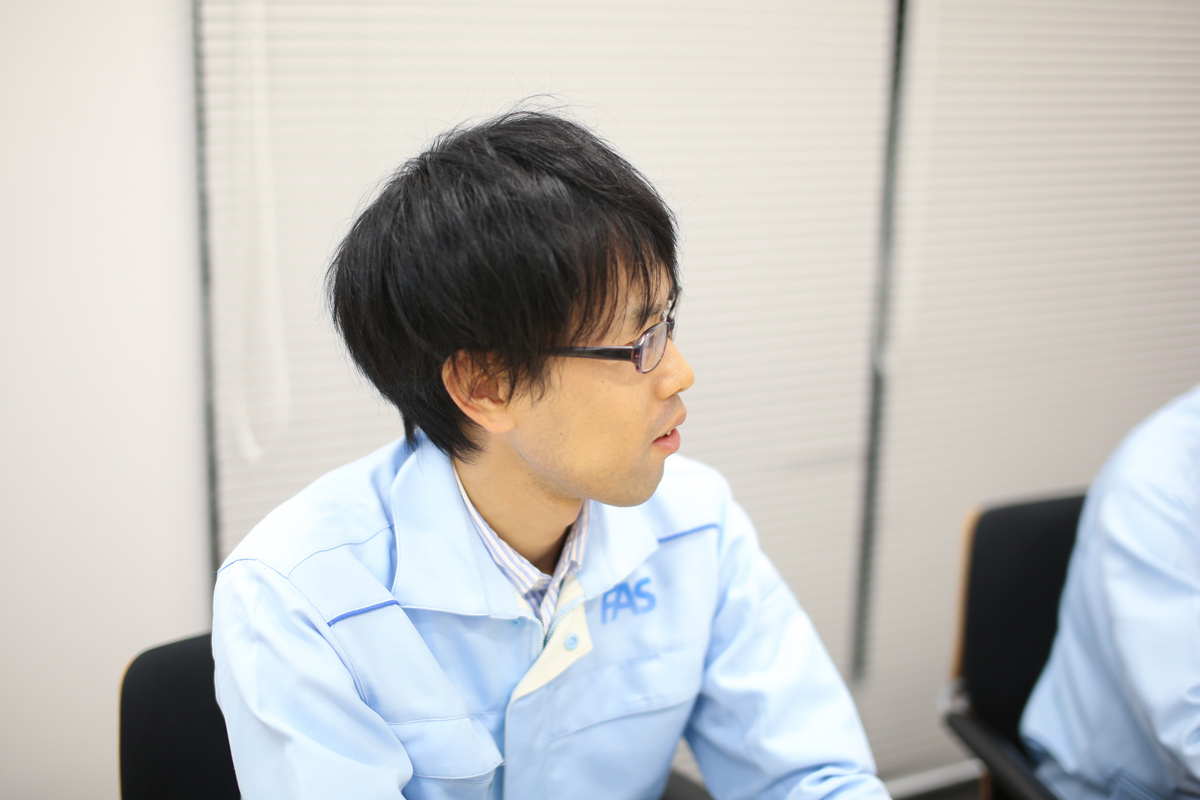
―When did the going get tough?
“We succeeded in adding specialists from various segments to our team and they collaborated with us to resolve the issues. However, in order to recruit the best people for the job, we had to work with people who were located far away.”
The team was scattered throughout Japan. The design and equipment people were located in Shiga Prefecture. Electronics manufacturing was conducted in Mie Prefecture. Our welding expert was in Chiba and our research facilities were based in Nikko, Hiratsuka and Yokohama.
“To bring these disparate members together with a feeling of unity as a team, we had to devise effective methods and timing for meetings and information sharing.”
“For example, because we knew that the manufacture and design of the terminal would differ dramatically from previous products, we had to share information assiduously from the beginning. An attitude of ‘Here’s the design, now get on with the manufacturing’ would not do. Our attitude had to be more like, ‘This is the kind of thing we want, but practically speaking, how does that work for the manufacturing side?’ I think that approach enabled us to avoid trouble as we proceeded.”
Sharing information from the earliest stages formed the basis for a stable development framework, enabling later work to proceed smoothly. The benefits of this approach became manifest in other ways.
The Project Was Shared with the Clients from the Concept Stage, Including Plant Observation
“When the clients suggested that corrosion-resistance approaches other than coating with plastic were impractical for technical and cost reasons, we introduced our ideas by saying, ‘If we use this manufacturing technology, this sort of design becomes feasible.’ This sort of dialogue stoked the client’s interest and anticipation, enabling us to obtain their cooperation on a variety of fronts.”
“We allowed numerous customers to observe the process in our plant. Everyone was surprised at how our manufacturing process overturned conventional concepts of speed and precision in welding.”
The Alpha Terminal was developed through close collaboration, not only within Furukawa AS but with clients as well. Many people were waiting impatiently, and the rollout in August 2015 was sensational. The event accelerated the adoption of aluminum electrical wiring.
Future Directions in the Alpha Terminal Strategy
“The number of types of terminals used in wire harnesses are vast. As things stand today, there’s no way the Alpha Terminal is going to replace them all. Going forward we’re going to expand our lineup, extend the range of products in which aluminum electrical wires are adopted, and strive to make them even lighter. All of these efforts will be aimed at promoting the use of the Alpha Terminal worldwide.”
Just as drops of water can in time become an ocean, Furukawa AS professionals on the shop floor are working steadily every day to develop the products of tomorrow.
> Aluminum wire harness product information
> Click here for inquiries about aluminum wire harness
The development of fiber laser welding technology was the starting point from which the development of the Alpha Terminal became a reality.
This interview was an object lesson in the core strengths of Furukawa AS. The Alpha Terminal was made possible not only by excellent technology but also through the passion and ingenuity of the developers and a culture that prizes effective communication.
We will continue to update our series of interviews on an occasional basis.
Please be sure to join us for further stories of development at Furukawa AS in support of the automotive industry.
![[Vol.2] Project Story-Understanding the secret story of Alpha Terminal development-](https://www.furukawaas.co.jp/wp-content/uploads/2020/05/recruit_ps2_img00.jpg)
![[Vol.7] FAS in the World of Motorcycles (Part 2) (Interviews): Interviews with Developers](https://www.furukawaas.co.jp/wp-content/uploads/2021/10/wire_image.jpg)
![[Vol.3] Project Story- Cars that change with CASE and MaaS, the future drawn by Furukawa AS (Part 1)-](https://www.furukawaas.co.jp/wp-content/uploads/2020/06/5S7A2384-1024x683.jpg)
![[Vol.9] Welcome to the 9th FAS NEXT! The Co-creation of FAS Head Office and FAS Starts Here](https://www.furukawaas.co.jp/wp-content/uploads/2022/03/IMG_0373-1024x683.jpg)
![[Vol. 7] FAS in the World of Motorcycles (Part 2): From Hidden Parts of Stock Motorcycles to MotoGP](https://www.furukawaas.co.jp/wp-content/uploads/2021/08/56522010_m_3-1024x684.jpg)
